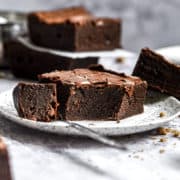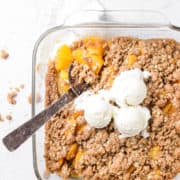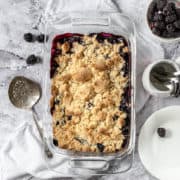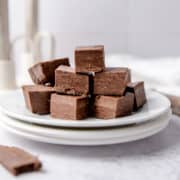Potatoes are a staple all over the globe and can be served as a side dish, included in a variety of potato recipes, or even be the star of the meal. Knowing how to store potatoes means they can last for weeks or even months. An economic and tasty choice, the humble potato comes in more than four thousand varieties, over a hundred of which are grown in the United States.

Jump to:
Since there are so many kinds of potatoes, you can include them in any course, including appetizers, soups, main dishes, or even dessert if you’re using a sweet variety. These starchy tubers are popular all over the globe, although in some countries they are "potato" and in others, they might be "po-tah-to"!
Nearly everyone enjoys potatoes and has their own favorite way of serving this versatile tuber. I love making potato salad in the summer and leek and potato soup during the cooler months. A baked potato takes mere minutes in the microwave and homemade fries are always a treat.
As for sweet potatoes and yams, they are ideal for desserts, such as sweet potato pie and sweet potato cupcakes.
What are Potatoes?
Potatoes (Solanum Tuberosum) originated in the Andes, in South America. Although they were cultivated about 8,000 years ago, they didn’t reach Europe until the middle of the 16th century. From there, this starchy tuber gradually gained popularity all over the globe. After rice and wheat, they are the third most grown crop on the planet.
There are far too many varieties to mention them all. However, many can be grouped into savory or sweet potatoes. The savory ones include both waxy (starchy) and floury potatoes. They also come in different shapes, sizes, and colors.
Although they are normally in season from late summer to early winter, it is possible to grow them year-round and of course to find them in grocery stores all year long. Fascinatingly enough, potatoes were the very first food to be grown in space! They went into space in 1996 on the space shuttle Columbia.
How to Choose the Best Potatoes
Select potatoes that are smooth, clean, firm, and free from horns and sprouts. Don’t choose any with soft, dark patches, wrinkled skin, a bad smell, or a greenish look. Since fresh potatoes are best kept at a cold temperature, you will probably find the best ones for long-term storage somewhere cool or cold, with good ventilation.
However, if you're planning to use your Yukon Gold, red potatoes, or whichever types of potatoes you have within a few days, you can buy them in a bag from the grocery store shelf and then just choose the best place without too much light or too much moisture once you're home.
You should also pick the correct potato for the dish you’re making. If you want to use them for stew, potato salad, roasted potatoes, or casseroles, choose waxy potatoes. They contain more sugar and moisture than starchy ones and are usually smaller with creamy, firm flesh and thin skin. Varieties include baby potatoes, new potatoes, French fingerling, and red bliss.
Starchy potatoes, on the other hand, are low in moisture, high in starch, and creamy white inside with a floury texture. They’re usually long rather than round and have coarser skin. Examples of starchy potatoes include russets and King Edwards. Since they’re absorbent and fluffy, choose starchy potatoes for making wedges, fries, or mashing.

How to Store Potatoes
Potatoes should be kept somewhere dry, cool, and dark. I usually store mine in a paper bag inside my pantry. Keeping them in a cardboard box or a paper bag inside a kitchen cabinet also works really well. Don’t keep raw potatoes in the refrigerator, otherwise, they will get soft, and green, and grow sprouts.
The ideal temperature for a long shelf life is between 40°F and 50°F and they also enjoy high humidity. Potatoes are OK with humidity levels over 90% so go ahead and keep them in a humid place - they will be fine. The following tips should be useful if you plan to store your homegrown potatoes or store-bought spuds for a long time:
- Keep them somewhere dark. When potatoes see sunlight, they turn green and wrinkle in a few days, so choose a paper bag, basket in the pantry, or any other dark place in the kitchen. In fact, any dark room will work as long as it’s cool in there.
- Potatoes need airflow. The plastic bags they came in encourages water and carbon dioxide to be released, and also trap moisture, which can make the potatoes damp and more susceptible to going bad. For this reason, transfer them into a ventilated container, paper bag, perforated plastic bag, open box, or mesh bag once you get them home and keep them in a dry place.
- Choose a cool spot. Potatoes begin to sprout if they get warm, so don’t keep them on top of the refrigerator or next to the oven. You probably don’t have a root cellar for long-term storage at room temperature, but you don’t need one. Just pick a cool place. An unheated basement or shed would work well for potato storage, or a kitchen cupboard if there's room in there, for the best results.
- Keep them away from other fruit and vegetables. If stored alongside onions, avocados, apples, or bananas, potatoes will sprout earlier, so the best way to store potatoes is by themselves or else they’ll be covered in sprouts within a couple of weeks or less.
How to Tell When Potatoes Go Bad
It’s quite easy to tell when potatoes are spoiled and this can happen despite your best efforts to use a well-ventilated container. Telltale signs of bad potatoes include soft spots, black spots, and mold. Shriveled or wrinkled potatoes are also past their prime. Although it isn’t usually dangerous to eat spoiled potatoes, they won’t have a good taste or texture.
If your potatoes have turned green, this means they’ve been exposed to light and will have a bitter flavor and might cause a stomach ache. Green potatoes should be thrown out. This is why knowing how to store potatoes is so important.
Common Questions
Although potatoes can keep for weeks when stored correctly, you might want to keep a supply of them for even longer. Potatoes can be frozen for up to 3 months. You need to peel, slice, and blanch them first, which means giving them 3 minutes in boiling water and then draining them and plunging them into a bowl of cold water. If you don’t blanch potatoes before freezing they will be mushy when thawed. Freeze them in a single layer before transferring them into an airtight container.
Mashed potatoes take some effort so it’s rarely worth making them for just one or two servings. That’s why freezing them can be handy. Once your leftover mashed potatoes have cooled, put them in a freezer-safe container or freezer bag, and remove as much air as you can. They will be fine for up to a month. You can then thaw them in a pan on the stove or in the oven at 350°F for about 35 minutes.
These starchy vegetables contain vitamins, fiber, and minerals. They are especially rich in Vitamin C. Although potatoes can be used to make high-fat, high-calorie dishes, such as French fries, the actual potato itself is fat-free, cholesterol free, and low in sodium. The fiber found in potatoes keeps you feeling full for longer and potatoes contain more potassium than bananas, so you might want to grab some the next time you’re at the grocery store.
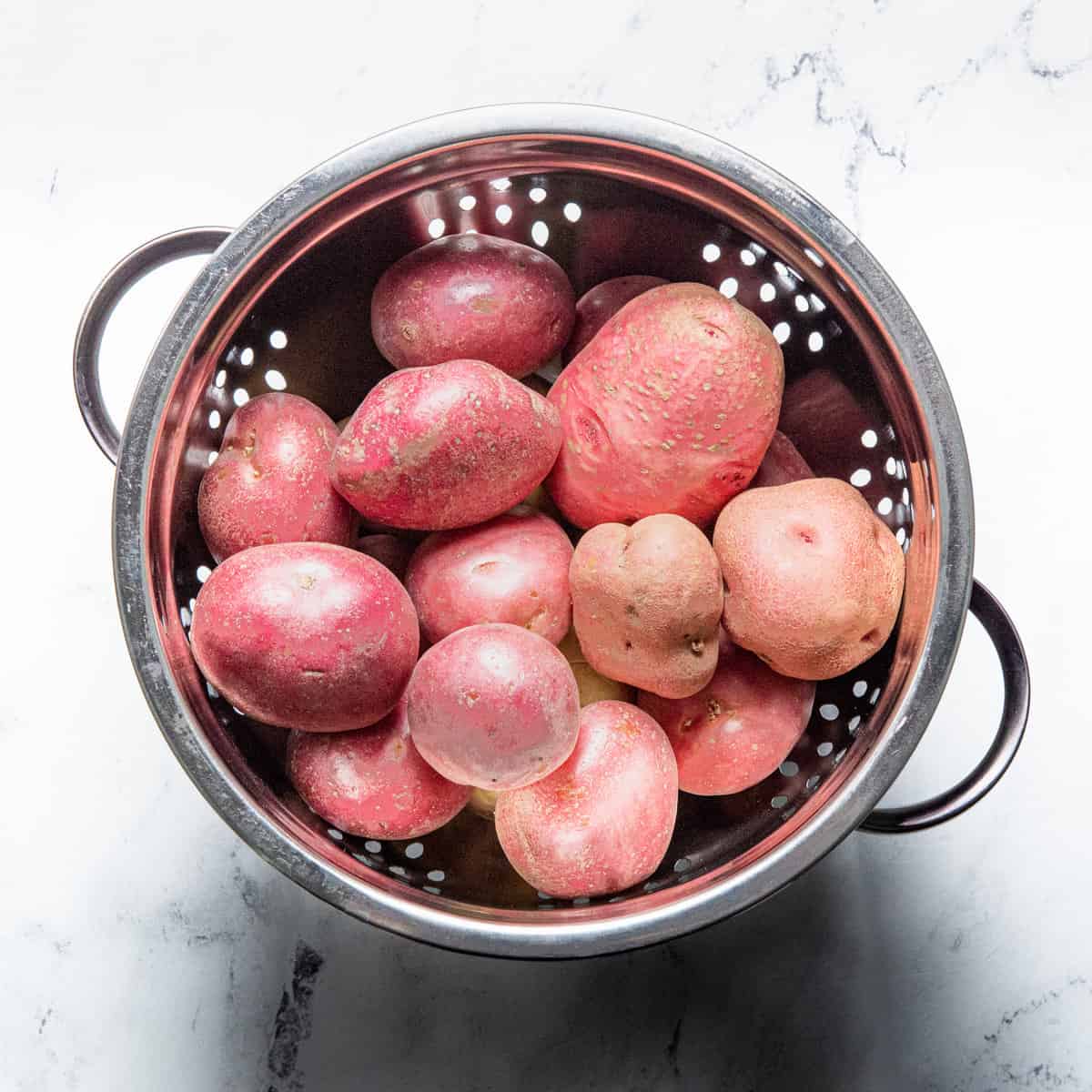
Fun Facts
- Potatoes are the most commonly eaten vegetable in the United States. Each U.S. resident consumed over 49 pounds of potatoes on average in 2017.
- Thomas Jefferson is credited with introducing French fries to the United States when serving them at a dinner in the White House.
- The biggest potato chip in the world measures 23x14½ inches and is on display at the Idaho Potato Museum.
Now you know how to choose the best potatoes and store them correctly following the best tips, you can make plenty of delicious potato-based recipes the whole family will enjoy.







